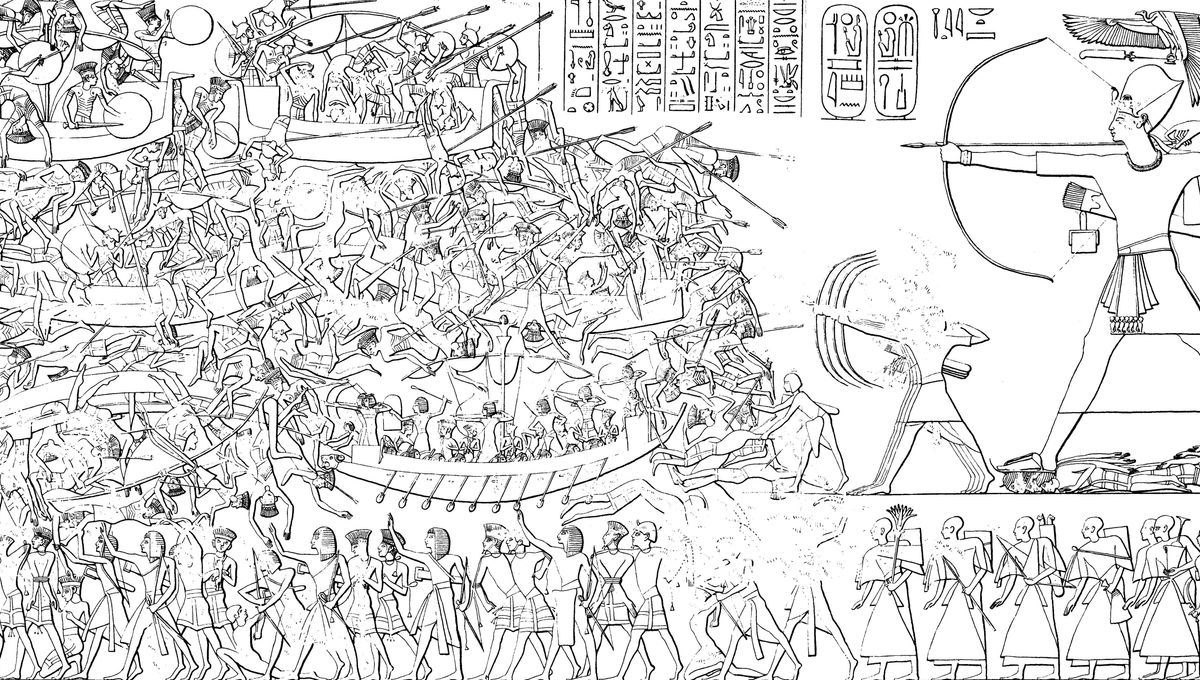
The ocean has fascinated and terrified humankind since time immemorial thanks to its ability to bring forth all manner of strange entities and forces – whether good, bad, or ugly. Never was this more true than during the Late Bronze Age, when the waters of the Eastern Mediterranean spawned a floating army of marauders known as the Sea Peoples, who attacked and destroyed a number of great empires including the Mycenaeans, the Hittites, and even the Egyptians.
At least, that’s what some historians think. Frustratingly, the Sea Peoples left behind no material culture or written sources, which means we have no idea who they were, where they came from, or if they even existed at all.
What we do know is that during the late 13th and early 12th centuries BCE, all of the major Bronze Age civilizations suddenly fell into ruin – a phenomenon known as the Late Bronze Age Collapse. A number of factors have been hypothesized to have catalyzed this catastrophe, including climate change, disease, and a proposed conflict known as World War Zero.
However, a relief on the mortuary temple of the Egyptian pharaoh Ramesses III provides evidence for an alternative explanation. Depicting a chaotic battle between an army of Egyptian archers and a spear-wielding navy, the scene may recount an attempted invasion by the Sea Peoples in 1175 BCE.
An accompanying inscription explains that the mysterious seaborne foe consists of an alliance of tribes known as Peleset, Thekel, Shekelesh, Denyen, and Weshesh, who hail from places including Sicily, Sardinia, Cyprus, and Anatolia. Referencing the empires that the Sea People laid waste to before reaching Egypt, the text states that “no land could stand before their arms: from Hatti, Qode, Carchemish, Arzawa, and Alashiya on, being cut off [destroyed] at one time.”
Elsewhere, a cuneiform tablet from Syria describes how the Sea Peoples raided and demolished the once mighty Ugarit kingdom. Radiocarbon dating of a series of artifacts linked to a Bronze Age battle in the region has hinted that the attack may have occurred around 1190 BCE, which correlates with the narrative that the Sea Peoples racked up a string of victories before taking on the forces of Ramesses III.
Yet it was in Egypt that their advance was halted, and some sources claim that the Sea Peoples later settled in Philistia, becoming the Philistines. Despite their defeat, though, the damage the Sea Peoples did to Egypt may have contributed to the collapse of the New Kingdom around a century later.
However, with little evidence other than a temple built by a self-glorifying pharaoh, it’s fair to say that our knowledge of the Sea Peoples and their history is pretty sketchy, and there are more than a few scholars who doubt whether they really had anything to do with the fall of the great Bronze Age empires.
Source Link: Who Were The Mysterious “Sea Peoples”, Destroyers Of The Ancient Empires?